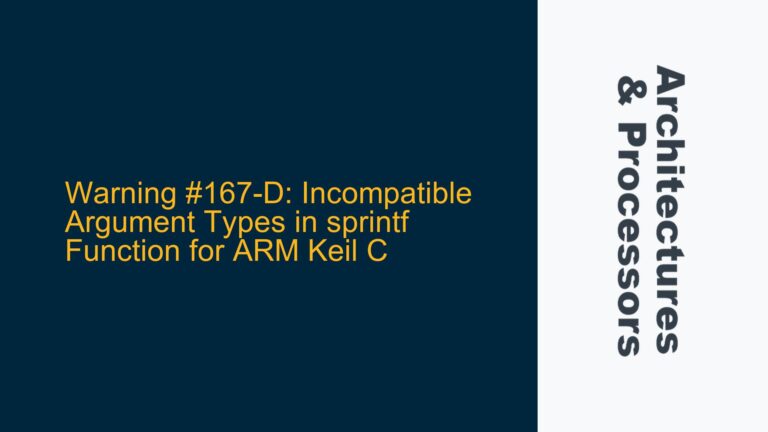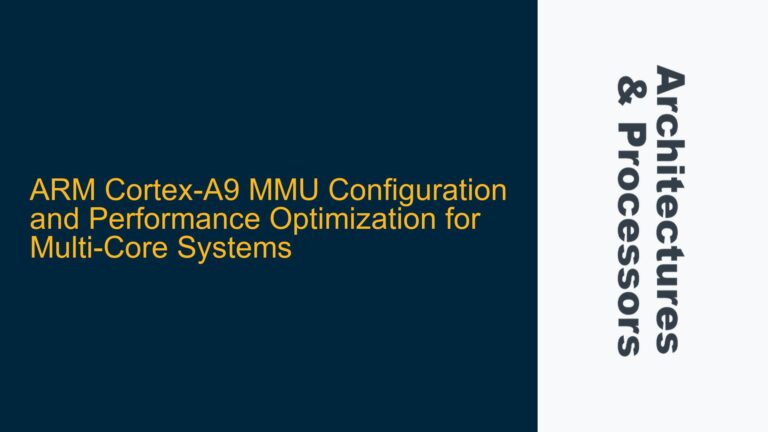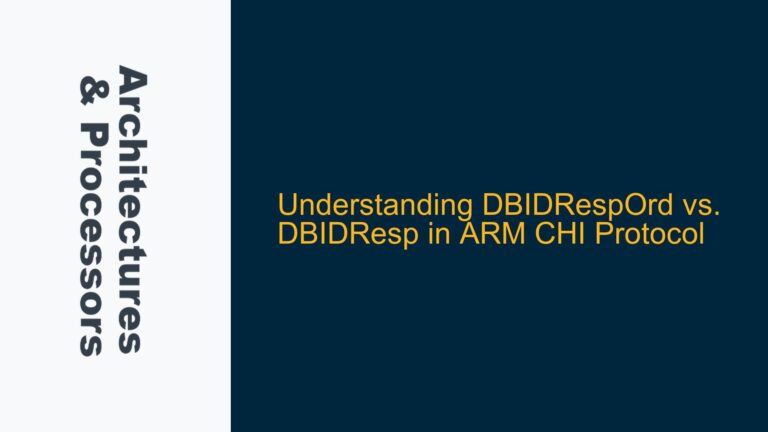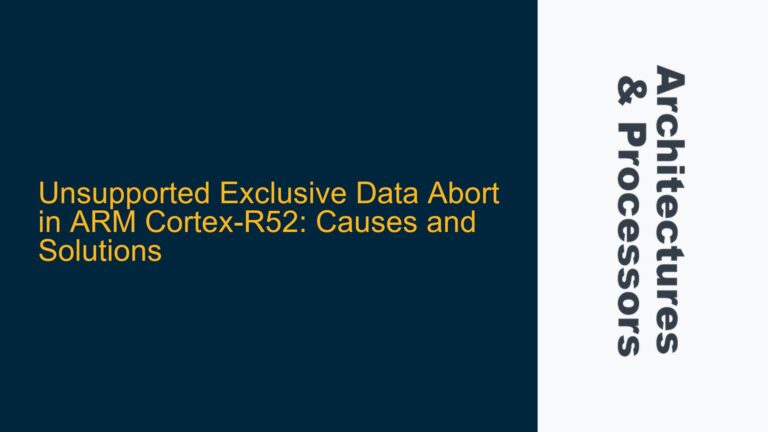Cortex-A9 Out-of-Order Execution and Register Renaming Mechanisms
The Cortex-A9 processor, a member of ARM’s Cortex-A series, is designed with an out-of-order execution pipeline that enhances performance by allowing instructions to be executed in an order different from their program sequence. This capability is crucial for maximizing throughput, especially in scenarios where certain instructions are stalled waiting for data or resources. The out-of-order execution is facilitated by several key components, including the register renaming mechanism and the reorder buffer (ROB).
Register renaming is a technique used to eliminate false dependencies (WAR and WAW hazards) that can occur in pipelined processors. In the Cortex-A9, the register renaming unit dynamically maps architectural registers (those specified by the instruction set architecture) to a larger set of physical registers. This mapping allows multiple instructions that use the same architectural register to execute concurrently, as long as they do not have true data dependencies (RAW hazards).
The reorder buffer plays a critical role in ensuring that the results of out-of-order execution are committed to the architectural state in the correct program order. The ROB holds the results of executed instructions until they are ready to be committed. This ensures that the processor can recover from speculative execution and maintain the illusion of in-order execution for the programmer.
Absence of Reorder Buffer in Cortex-A9 and Comparison with Cortex-A73/A75
One of the key points of confusion in the discussion is whether the Cortex-A9 employs a reorder buffer (ROB) similar to other ARM processors like the Cortex-A15, Cortex-A57, and Cortex-A72. The Cortex-A9 does indeed utilize a reorder buffer, but its implementation and size differ from those in later architectures like the Cortex-A73 and Cortex-A75.
The Cortex-A73 and Cortex-A75 processors, which are more recent designs, have moved away from using a traditional reorder buffer. Instead, they employ a physical register file (PRF) to store micro-operation (µop) operands. This design choice reduces power consumption by minimizing data movement within the CPU and alleviates some of the bottlenecks associated with a reorder buffer. The PRF approach allows these processors to maintain a large instruction window without the overhead of a ROB.
In contrast, the Cortex-A9 uses a more conventional out-of-order execution model with a reorder buffer. The size of the ROB in the Cortex-A9 is smaller compared to the Cortex-A15 and Cortex-A57, which have 40 and 128 ROB entries, respectively. The instruction window size in the Cortex-A9 ranges from 40 to over 100 entries, which is sufficient for its target applications but less than what is available in more recent architectures.
Detailed Analysis of Cortex-A9 Pipeline Stages and Data Structures
To fully understand the behavior of the Cortex-A9 pipeline, it is essential to delve into the specifics of its pipeline stages and the data structures that support out-of-order execution. The Cortex-A9 pipeline consists of several stages, including fetch, decode, rename, dispatch, execute, and commit. Each stage plays a crucial role in ensuring that instructions are processed efficiently and correctly.
The fetch stage is responsible for retrieving instructions from the instruction cache or memory. The decode stage decodes these instructions into micro-operations (µops) that the processor can execute. The rename stage then maps architectural registers to physical registers, eliminating false dependencies and enabling out-of-order execution.
The dispatch stage assigns µops to the appropriate execution units, such as integer ALUs, floating-point units, or load/store units. The execute stage carries out the actual computation, and the results are temporarily stored in the reorder buffer. Finally, the commit stage ensures that the results are written back to the architectural registers in the correct program order.
The reorder buffer in the Cortex-A9 is a critical component that holds the results of executed instructions until they are ready to be committed. The size of the ROB determines how many instructions can be in flight at any given time, which directly impacts the processor’s ability to exploit instruction-level parallelism. The Cortex-A9’s ROB size, while smaller than that of more recent architectures, is sufficient for its intended use cases, such as embedded systems and mobile devices.
In summary, the Cortex-A9 employs a traditional out-of-order execution model with a reorder buffer, unlike the more recent Cortex-A73 and Cortex-A75, which use a physical register file. Understanding the differences in these architectures is crucial for optimizing code and selecting the right processor for a given application. The Cortex-A9’s pipeline stages and data structures are designed to balance performance and power efficiency, making it a versatile choice for a wide range of embedded systems.






